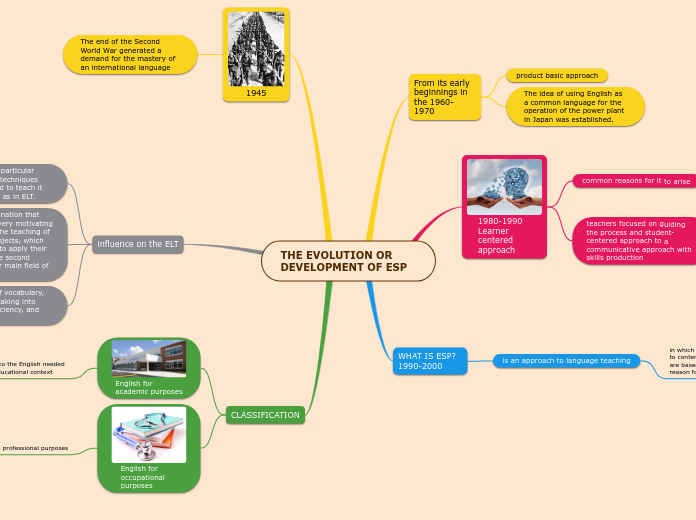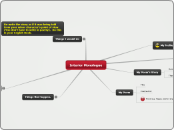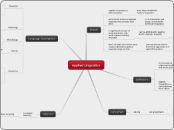по Margarita Narvaez 4 лет назад
1036
THE EVOLUTION OR DEVELOPMENT OF ESP
The development of English for Specific Purposes (ESP) saw significant changes from 1980 to 2000. Initially, the approach became more learner-centered, emphasizing the needs and reasons for students to learn English.









